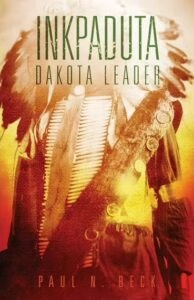One Book One Sioux County a collaborative program among the 8 public and 3 academic libraries in Sioux County in an attempt at community building through community conversation.
In this annual endeavor people and libraries-both public and academic-across Sioux County read and discuss the same book. The libraries host book talks in their own towns throughout the year. In the fall a collaborative event is held at a central location. In the past this has been the author visiting and a panel discussion of people involved in the story.
Mark your calendars: 2026’s main event will be on Thursday, November 5, 2026 at Northwestern College in Orange City, IA.
Visit our calendar to view information about other upcoming events related to this year’s One Book One Sioux County selection or contact your local library to see when they are hosting a book discussion.
This year’s primary selection is Moon of the Snow-Blind by Gary Kelley. To enrich the experience, two companion titles provide historical context and personal testimony.
![Cover of the graphic novel Moon of the Snowblind]() About the Book Moon of the Snow-Blind by Gary Kelley
About the Book Moon of the Snow-Blind by Gary Kelley
This graphic nonfiction book dramatizes the 1857 Spirit Lake Massacre, sharing the story of both settler families and the Dakota leader Inkpaduta using black-and-white illustration and historical narrative. Drawing on news stories and survivor accounts, Kelley weaves archival research and memoir fragments with his own artwork to depict this episode of frontier violence. His stark illustrations heighten the tension and moral complexity of the encounter, and he invites readers to reconsider how this familiar tale is told.
About the Author Gary Kelley
Gary Kelley grew up mostly in Algona, Iowa, … a town that historically had its own experience with lnkpaduta’s Dakotas. He earned a degree in art from the University of Northern Iowa in Cedar Falls, where he also establish his art studio. His career as a graphic designer rapidly evolved into one of illustration, painting, drawing, and visual storytelling.
![cover of the book Inkpaduta]() About the Book Inkpaduta: Dakota Leader by Paul Beck
About the Book Inkpaduta: Dakota Leader by Paul Beck
Leader of the Santee Sioux, Inkpaduta (1815-79) participated in some of the most decisive battles of the northern Great Plains, including Custer’s defeat at the Little Bighorn. But the attack in 1857 on forty white settlers known as the Spirit Lake Massacre gave Inkpaduta the reputation of being the most brutal of all the Sioux leaders. In this book, Paul Beck challenges a century and a half of bias to reassess the life and legacy of this important Dakota leader. In the most complete biography of Inkpaduta ever written, Beck draws on Indian agents’ correspondence, journals, and other sources to paint a broader picture of the whole person, showing him to have been not only a courageous warrior but also a dedicated family man and tribal leader.
After working in the museum field, Dr. Paul Beck turned to education; he’s been teaching history at Wisconsin Lutheran College since 1987. He holds a Ph.D. from Marquette University, and his main areas of interest are military history, the American Civil War, the Wild West, and Native American studies.
About the Book The Spirit Lake Massacre and Captivity of Miss Abbie Gardner by Abbie Gardner-Sharp
The Spirit Lake Massacre and Captivity of Miss Abbie Gardner is a firsthand account of the 1857 attack by a band of Dakota on frontier settlements near Spirit Lake, Iowa. Only a teenager at the time, Abbie Gardner was taken captive after her family and many others were killed. Her memoir, published in 1885, recounts her 84 days in captivity, blending personal recollection with the biases of her era. Both a captivity narrative and a key historical document, the book offers insight into settler life, frontier violence, and the shaping of American memory about conflict between Indigenous peoples and new settlers.
Abbie Gardner-Sharp (1843–1921) was a survivor of the 1857 Spirit Lake Massacre. She published her memoir in 1885, almost 30 years after the event, and used public documents and her own notes to reconstruct the story. She later operated a small museum at the massacre site, preserving artifacts and sharing her story with visitors
One Book One Sioux County Selections by Year:
- 2025 – Frozen River by Ariel Lawhon
- 2024 – Don’t Look Back by Achut Deng & Keely Hutton – watch the video introduction from the authors
- 2023 – Sugar Birds by Cheryl Grey Bostrom –watch the event recording and the video introduction from the author
- 2022 – Midnight Assassin: A Murder in America’s Heartland by Patricia L. Bryan and Tom Wolf – watch the event recording and Q&A and the video introduction from the authors
- 2021 – The Line Between by Tosca Lee – watch the Q&A with author Tosca Lee
- 2020 – Black River by S.M. Hulse – watch the recording of the Zoom discussion
- 2019 – The Life We Bury by Allen Eskens – Watch the Q& A with author Allen Eskens
- 2018 – The Witness of Combines by Kent Meyer – Watch the panel discussion
- 2017 – The Boys in the Bunkhouse: Servitude and Salvation in the Heartland by Dan Barry – click here to view the video recording of the Panel Discussion featuring Clark Kauffman, Jane Hudson, Sue Gant, & Ronald Vos
- 2016 – Ordinary Grace by William Kent Krueger




